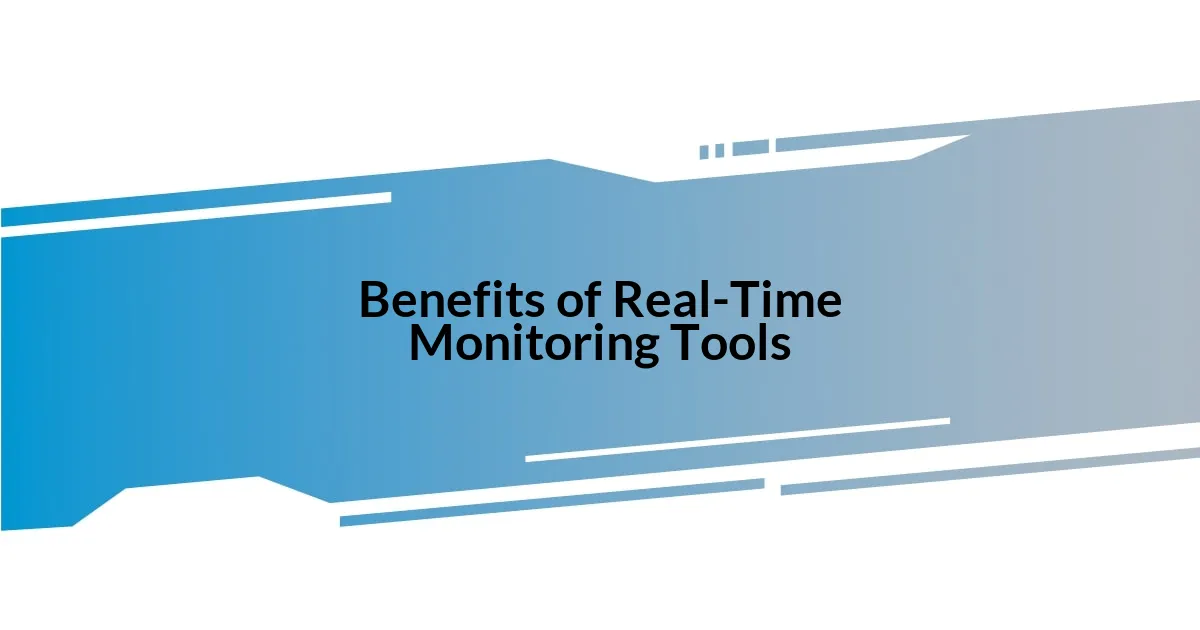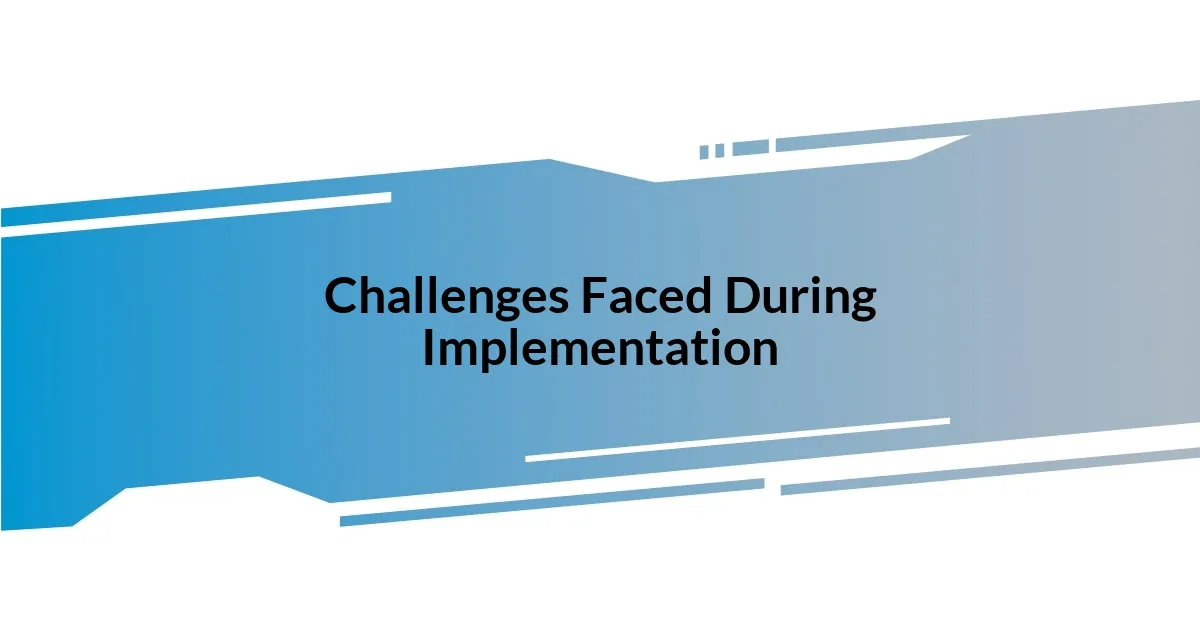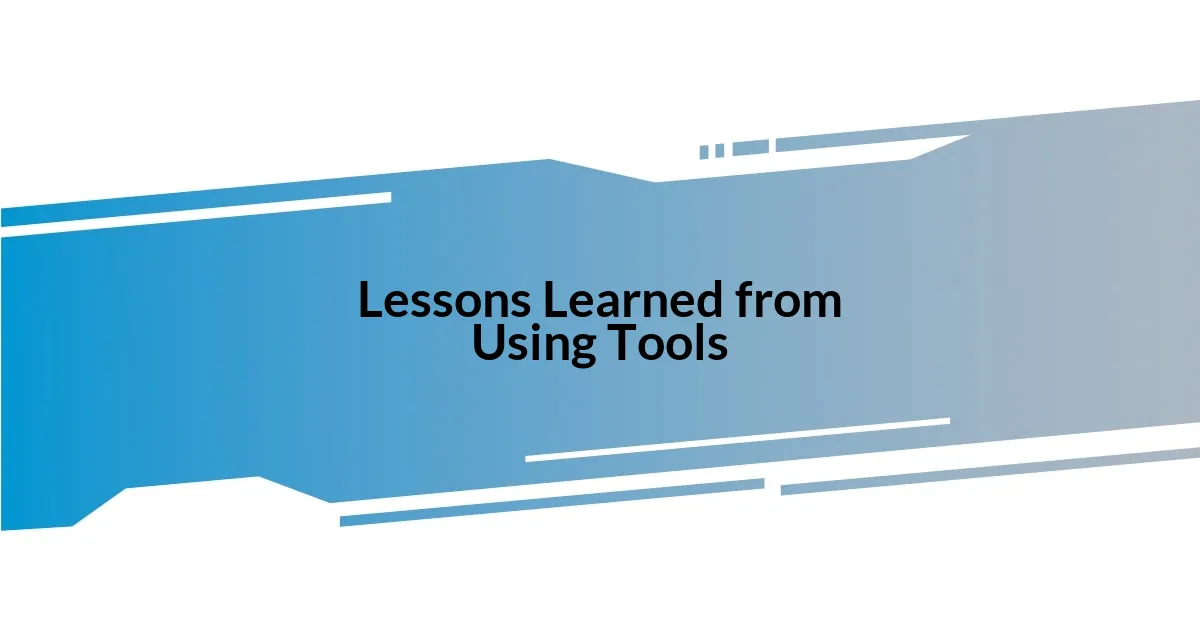Key takeaways:
- Real-time monitoring tools enhance decision-making and collaboration, enabling teams to respond swiftly to performance anomalies.
- User-friendliness and integration capabilities are crucial when selecting monitoring tools to ensure team adoption and effectiveness.
- Training, planning, and addressing user resistance are essential challenges to overcome during the implementation of these tools.
- Gathering feedback and celebrating small victories fosters team engagement and optimizes the use of monitoring tools.

Introduction to Real-Time Monitoring
Real-time monitoring tools have revolutionized how we perceive and manage data, allowing users to track performance and respond to issues as they arise. I remember the first time I integrated these tools into my workflow; it felt like flipping a switch from darkness to light. Suddenly, I had visibility that helped me act swiftly rather than waiting for reports to reveal problems days later.
One major emotional takeaway from my experience is the sense of control that real-time monitoring fosters. It’s that exhilarating feeling when you spot an anomaly before it escalates—it’s almost like being a superhero, swooping in just in time to save the day. Have you ever wished you could be proactive instead of reactive? With these tools, I find that wish satisfied time and again.
The beauty of real-time monitoring lies in its immediate feedback loop, providing not just data, but actionable insights. I vividly recall a moment when live tracking helped my team streamline a critical process during a peak season. We didn’t just survive busy times; we thrived, adjusting our strategies on the fly. How often do we get opportunities like that? Engaging with these tools makes those moments possible.

Benefits of Real-Time Monitoring Tools
Real-time monitoring tools provide a significant advantage by allowing teams to make informed decisions quickly. During a hectic project I once managed, these tools played a crucial role in identifying bottlenecks almost immediately. It was invigorating to see our progress in real-time; it not only motivated the team but also solidified our ability to pivot whenever necessary.
Another benefit I cherish is the enhanced collaboration that real-time data fosters. I recall a particular meeting where everyone was on the same page because of the live dashboard we were monitoring. The atmosphere shifted from uncertainty to enthusiasm as we could all contribute insights based on up-to-the-minute information. Have you ever noticed how shared knowledge can unify a group? It’s one of the most rewarding aspects of real-time monitoring.
Moreover, these tools help in resource optimization. I remember an instance where we were about to allocate more budget toward an underperforming strategy. Thanks to real-time feedback, we could analyze the data that pointed in a different direction and reallocate our resources effectively. It’s fulfilling to witness how data-driven decisions can ultimately lead to enhanced outcomes.
| Benefit | Description |
|---|---|
| Immediate Decision Making | Allows for quick adjustments based on accurate data. |
| Improved Collaboration | Encourages teamwork by sharing real-time insights among members. |
| Resource Optimization | Enables smarter allocation of resources based on current performance data. |

My Selection Process for Tools
When selecting real-time monitoring tools, I prioritize user-friendliness and integration capabilities. I recall a time when I overlooked this aspect and chose a tool that was unnecessarily complicated. It ended up being a frustrating experience for the entire team. A smooth user interface is essential—it allows everyone to jump right in without a steep learning curve, fostering buy-in from the start. I’ve found that when team members can easily engage with the tools, it enhances the overall effectiveness of the monitoring process.
Here are some key criteria I consider during selection:
- Ease of Use: If the tool is intuitive, my team is more likely to adopt it quickly.
- Integration: Compatibility with existing systems is crucial for seamless operations.
- Customization: I appreciate tools that allow me to tailor dashboards to specific team needs.
- Support: Having solid customer support can make a significant difference when issues arise.
The emotional journey during my selection process also involves weighing the cost against the value each tool provides. Once, I hesitated over a premium tool that seemed to offer everything I needed. I took a leap of faith, and it paid off. The insights I gained were transformative, proving that sometimes the most significant investments yield the most extraordinary returns. Being able to justify that expense brings a sense of accomplishment but also a thrill in knowing I made the right choice.

Popular Real-Time Monitoring Tools
One of the most popular real-time monitoring tools I’ve encountered is Grafana. I remember when I first experimented with it during a data visualization project; it was like turning on a light in a dim room. The way Grafana integrates with various data sources and presents the information through interactive dashboards was like a breath of fresh air for my data-driven approach. Have you ever felt that rush of clarity when everything clicks into place?
Another tool that has my attention is Google Analytics, particularly for website performance tracking. I recall a time when our team’s website traffic surged unexpectedly. Using Google Analytics’ live reporting feature, we could pinpoint which content drove traffic in real-time—a game-changer for our marketing efforts. It really made me realize how powerful timely data could be, especially when deciding on social media strategy and ad placements.
Then there’s Datadog, which I’ve used predominantly for monitoring cloud infrastructure. One project stands out where we faced intermittent outages. I was able to set up dashboards that showed real-time system metrics, allowing us to troubleshoot issues almost instantly. The satisfaction of resolving problems before they escalated was incredibly rewarding. It’s amazing how these insights can empower teams to take proactive measures rather than just reacting to issues as they arise.

Features I Value Most
When I think about the features I value most in real-time monitoring tools, customization tops the list. I thrive on the ability to tailor dashboards to meet my team’s specific needs. During a recent project, I meticulously configured the visualizations to highlight key performance indicators that actually mattered to us. The sense of ownership and engagement this created among my team members was palpable. Have you ever noticed how a little personalization can go a long way in fostering collaboration?
Another significant feature is the level of integration a tool offers. I vividly remember when we transitioned to a new monitoring platform and how well it synced with our existing project management software. This seamless integration created a smoother workflow, saving us precious time. I can’t help but think how crucial it is to have tools that work together harmoniously—after all, isn’t efficiency the name of the game in today’s fast-paced environment?
Lastly, the value of robust customer support cannot be overstated. I recall an incident where an unexpected bug threatened to derail a critical report. With just a quick call, the support team guided me through the solution. Having someone on the other end, ready to assist, transformed a potentially stressful situation into a manageable one. Isn’t it reassuring to know that support is just a call away when you really need it?

Challenges Faced During Implementation
Implementing real-time monitoring tools can sometimes feel like navigating uncharted waters. One challenge I faced was the training required for my team. I remember leading a workshop where I could almost see the confusion in their eyes as I introduced new functionalities. It struck me how critical effective training is, and how it can make or break the adoption of a tool. Have you ever experienced that anxiety of introducing something new but knowing you need to keep moving forward?
Another hurdle that caught me off guard was integrating different data sources. I vividly recall one project where our existing systems just didn’t mesh well with the new monitoring tool. The frustration mounted as I attempted to pull data from various platforms, often facing compatibility issues. It’s in those moments of struggle that I realized how vital solid planning and technical support are. Have you ever felt like you were trying to fit a square peg into a round hole?
Lastly, I encountered issues related to user resistance. Picture this: After weeks of preparation, I was thrilled to launch the new tool, but not everyone shared my enthusiasm. Some team members were hesitant to shift their routines. So, I made it a priority to highlight quick wins from the tool in our discussions. It’s funny how just a few small successes can spark curiosity and buy-in, isn’t it? Understanding human dynamics proves just as important as the technology itself in any implementation journey.

Lessons Learned from Using Tools
One key lesson I absorbed from using real-time monitoring tools is the importance of patience during the learning curve. I remember a moment when I was excited to dive into a new feature, but my enthusiasm quickly turned to frustration when I encountered a stumbling block. It was a reminder that new tools require time to master. Have you ever felt that rush of anticipation, only to have it tempered by the reality of technical hurdles? The takeaway for me was to embrace that early struggle, knowing that it would lead to greater proficiency down the line.
Another essential insight revolves around the power of feedback. Early in my journey with one monitoring tool, I decided to create an open forum where team members could share their experiences and suggestions. Listening to their thoughts opened my eyes to aspects of the tool I hadn’t even considered. It dawned on me that constructive feedback isn’t just a nice-to-have; it’s essential for optimizing tool usage. Have you noticed that sometimes the best insights come from those right beside you?
Lastly, I’ve learned to celebrate small victories along the way. During one project, a minor feature I had overlooked turned out to significantly improve our team’s workflow. I made it a point to highlight this success in team meetings, and I could see heads nodding in agreement about its impact. This lesson taught me that recognizing these little wins not only boosts morale but also motivates the team to fully embrace the tools at their disposal. Don’t you think it’s crucial to acknowledge those moments that spark a shift in our approach?